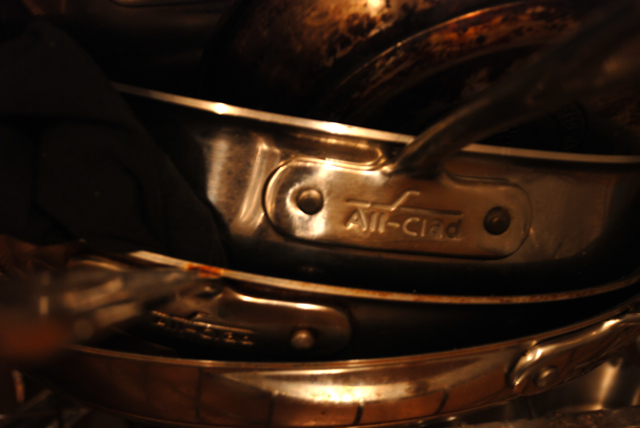Great article from the Washington Post highlighting the challenges of sustainability in restaurants, even if the intentions are good. The article focuses on two case restos in the DC area: Founding Fathers, a 263-seat restaurant promoting a commitment to fresh and local ingredients, and Equinox, a 90-seat (expensive) restaurant basically doing the same thing.
While the challenges are the same for both, the lesser-expensive Founding Fathers often has troubles truly sourcing its local ingredients, citing lack of clear reporting and cost. And that makes sense; think about three turns in a night, that’s almost 800 meals, and that’s just one daypart.
Talking with restaurateurs around in NYC, this is definitely an issue. As with most purchase decisions, cost is a/the major factor in choosing one product over another. Unfortunately, “long term assets” do not include anything about the environment or health concerns (until Google decides that they have a computer algorithm that can model this). When the rubber hits the road, how can a “good idea” also be a “profitable idea”? It is clearly a major concern for any business, and the food business is no exception. Quite simply, it is expensive to source local ingredients, and in the winter months, as any farmer’s market regular will attest, it is difficult to get ingredients that would compose an entire meal.
However, there is light at the end of the tunnel. A survey sourced from Zagat says that 61% of people are willing to pay more for “green” or “sustainable” food. A key question that is left out is of course, “how much more,” but let’s hold that thought for a moment. If this 61% is willing (and able) to shell out a few extra bucks to support farmers truly farming/raising sustainably, then this provides the much-needed money to invest in infrastructure and other needs, which then addresses some of the volume and distribution issues that are the problems in the first place. Take, for example, the Milk Thistle Farm, a local New York dairy farm in Ghent, NY. They recently started selling bonds to invest in a new bottle facility on-site. This will help with their distribution footprint, and will hopefully expand their market share. And it will bring their costs down (I hope).
This is why I continue to see immense value in partnering with the big food companies in order to effect any real change. At the same time, those big companies need to learn to partner with the little guys instead of buying them out and changing the rules. During a meeting in the Lehigh Valley last week, the President talked about the importance of innovation and its longer-term effects on the job market in this country. If we think about the food industry in the same way, there is plenty of room for innovation, and its benefits go much farther than job creation.
In any case, give the article a read. And if you’ve got an extra grand, get a Milk Thistle Farm bond.






